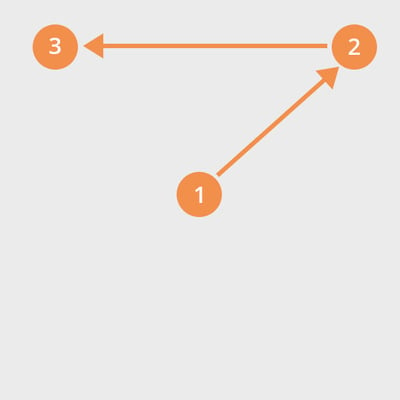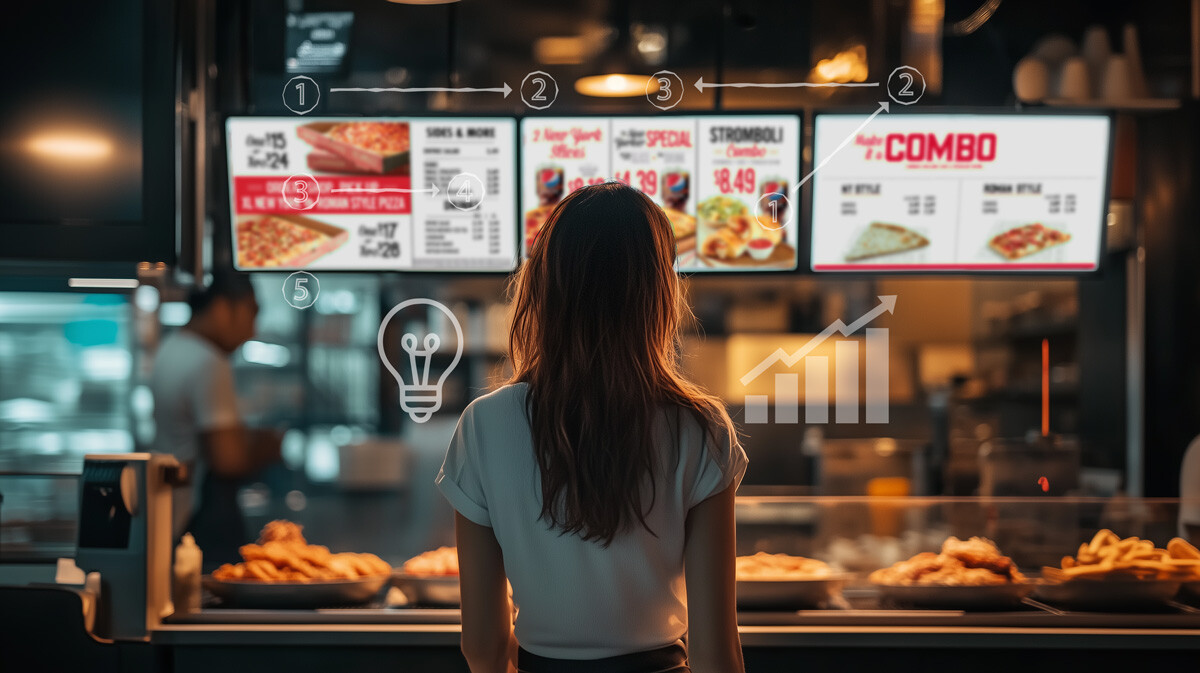Concept 1: Strategic Item Placement (The Science of Visual Attention)
Identifying Your Menu's "Golden Zones"
The "F" Pattern
This pattern typically applies to very text heavy menus with many items and limited or no imagery.
- Begins at top left
- Scans horizontally across the top
- Moves down and reads partially across
- Scans vertically down the left side

The "Golden Triangle"
This pattern typically applies to menus that have significant imagery and are less dense with text and descriptions
- Starts near the center
- Moves to the top right
- Then to the top left
- Important items should be here

What Items Deserve Prime Positions?
- High-Margin Items
This is not hard to determine. You should be able to see your food cost and margins pretty easily in you POS system. Placing high-margin items in this space will help increase your profitability. A real world example of this is Shake Shack.Shake Shack strategically positioned their LTO premium shakes and higher-margin burger options in the prime visual areas of their digital menu boards. Stores with the optimized menu placement saw a 22% higher attachment rate for premium shakes and a 14% increase in sales for their high-margin "Shack Stack" burger compared to control locations. CEO Randy Garutti specifically attributed $0.63 in additional per-ticket revenue to their "digital menu engineering initiatives focused on strategic item placement."
- Signature Items
Specialty or Signature items should be placed in these premium areas. Panera Bread reported a 30% increase in add-on sales after strategically repositioning their signature bakery items (Fast Casual Magazine, 2021). Some of the additional benefits included a 42% increase specifically in premium pastry selections, a $0.37 increase in average check size attributed directly to bakery add-ons. They also saw a significant impact during the 2-5pm day part when coffee-pastry pairings increased by 47%. - Promotional Offerings
Promotional items or Limited time offers should also leverage the benefit of this premium space. Wendy's saw a 15% increase in units sold when featuring specific combo meals in premium positions (NEC Display Solutions). The also experienced a 23% increase specifically during evening hours (5-8pm) and a $0.42 increase in per-transaction average when the repositioned items were purchased. One of the other benefits was a 18% decrease in the time customers spent at the order point, suggesting easier decision-making.
How to use these concepts
Visual Emphasis
- Size differentiation (15-20% larger)
- Color contrast
- Strategic white space
- Simple borders or frames
Strategic Motion (Use animation sparingly to make it special)
- Reserve for highest-priority items only
- Maintain adequate viewing time (8-10 seconds minimum)
- Use transitions between dayparts to highlight different items
Daypart Optimization
- Time-specific profit opportunities
- Changing customer demographics throughout the day
- Operational efficiency during rush periods
Measuring Results
Before Making Changes
- Units sold
- Percentage of total orders
- Average check when item is included
- Move one high-potential item to a golden zone
- Track performance for 7-14 days
- Compare to baseline
- Keep successful changes and continue testing
Common Pitfalls
As with anything you do, there are some key things to try and avoid. When it comes to implementing these strategies, be sure to avoid these common mistakes:
- Overcrowding prime areas: Creates visual clutter that reduces impact
- Static thinking: Fail to leverage digital flexibility for seasonal changes
- Neglecting the rest of your menu: Creating imbalance in overall design
Your Action Plan
- Select 1-3 high-potential items for prime placement
- Implement changes one at a time
- Measure results against baseline data
- Refine based on performance
- Cornell University School of Hotel Administration, Cornell Hospitality Quarterly
- Yang, Kimes, and Sessarego (2009), Journal of Hospitality Marketing & Management
- Shake Shack Q1 2023 Investor Relations report (2023)
- "Panera Bread's Digital Transformation," Fast Casual Magazine (2021)
- NEC Display Solutions, "Wendy's Digital Menu Case Study"
- Sicom Systems, "Bojangles' Digital Menu Implementation" (2019)
- "Restaurant Technology Annual Report," National Restaurant Association (2022)
- "Digital Menu Board Industry Report," Digital Signage Today (2023)
